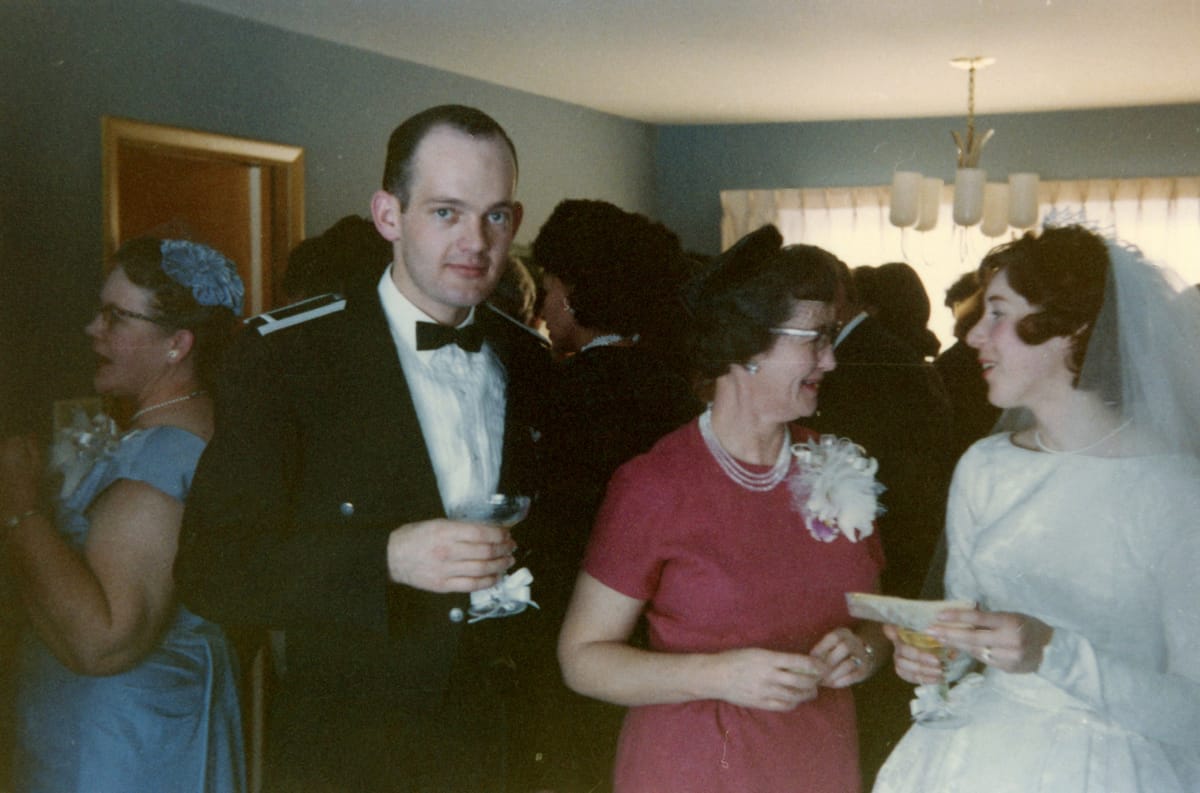Navigating Partnership in the AI Era

I’ve been thinking a lot about Product Management and Design lately: how they interact, where they clash, and how they might evolve together. The relationship between these disciplines has constantly reminded me of a complex partnership with productive tensions and occasional heated arguments over the dinner table. Like any long-term relationship, they’ve settled into patterns: who takes out the trash, who plans the vacations, who apologizes first after a fight.
The Traditional Tensions We All Recognize
Let’s be honest about the conflicts that can characterize this type of relationship:
- Product managers push for delivery yesterday to meet quarterly goals, while designers plead for a few more days to get the details right. We’ve all been in that meeting.
- PMs proudly display conversion metrics that went up 2% after a change, while designers worry about the long-term impact on user trust that no dashboard seems to measure.
- Product wants to add just one more feature for that big enterprise client; Design sighs and wonders what happened to the elegant, cohesive experience they once dreamed of building.
- Product brings spreadsheets of A/B test results to the table; Design brings recordings of confused users trying to navigate the interface. Both are right, and both are incomplete parts of the bigger picture.
- PMs manage within the constraints of this quarter’s headcount and last quarter’s tech debt; designers sketch solutions that would require neither of those things to exist.
- Product balances requests from Sales, Customer Success, and the CEO’s latest conference inspiration; Design champions the users who don’t have a seat at that particular table.
- Product requires detailed specifications with acceptance criteria that make an insurance policy look poetic; designers feel their creative wings clipped before leaving the nest.
- PMs celebrate shipping incremental improvements; designers dream about the cohesive experience that’s always just a few roadmap cycles away.
If you’re nodding along, you’ve lived this reality. If you’re feeling defensive, you might be part of the problem, or maybe you’re lucky enough to work somewhere that’s figured this out better than most.
A Family Story About Professional Change
These tensions remind me of something deeply personal. I am the youngest of four daughters. My sisters are eight, ten, and twelve years older than me. It’s almost like I am an only child in some ways, but we are clearly all related in how we stand, speak, and laugh. The similarities start to diverge from there. They were all born in the 1960s; I am a late-70s kid.
At one point, I joked to my mom that it was as if I had different parents. She cocked her head in thought and said, “Well, in some ways you did.” She was right. My childhood was stable: I was three when my dad left the Air Force. My eldest sister experienced 14 moves in 17 years.
But the most enormous gulf in our experience was the 14 months my father deployed in the Vietnam War. My sisters were nine, seven, and five when my mom was left to solo parent in a strange Northern California town where they knew no one except my father’s elderly relatives. I didn’t exist yet.
My parents met and married in the early 1960s. They viewed their lives as a partnership and leaned into their roles, divided as they were. Their roles remained unquestioned until my father left for a year. Mom managed the home and family daily; Dad worked but was on duty for kid wake-ups at night and occupied us on the weekends so Mom could sleep.
I cannot imagine being unified to abruptly being apart for that long time. As an officer, he was allowed one visit home during his assignment, but otherwise, it was letters and one weekly phone call.
My mother is a masterclass in resilience. Not only was she solo parenting three children under nine, but she was also a military wife far from any base. The liberal town of Nevada City ostracized her once they found out my father was deployed. She gritted through it all with her own genteel brand of steely resistance, earning the nickname “the Iron Butterfly” from my great aunt.
The Tech Industry’s Vietnam Moment
Why have I gone so deep here? Tech is in the midst of its own crisis. Design and Product have not questioned their roles in years, like a married couple moving through the motions of what the paradigm indicates their roles should be.
The world has changed suddenly; the tumult and change of the 1970s feel on brand for 2025. Economic uncertainty, technological revolution, shifting social roles, and questioning of established institutions characterize both eras.
Back to my parents’ marriage: when my dad returned from Vietnam, he came home to a different wife as a changed man. The timid co-ed he brought home from Indiana more than a decade before was now a woman in her own right, having run her household solo for more than a year. A woman’s role in America was amid a vast transformation, and she was changing with it.
The first Saturday back, my father woke early and took the car, their only car, to run errands. Unfamiliar with the family’s cadences, he did not know my sister had a soccer game, and my furious mother could not drive her there. When he got home, he received what my mother calls a “come to Jesus” talk.
He didn’t take the car because he thought he was more deserving of its use. He was used to moving on his own, and as commander of the camp, he held many accountable to him and was responsible to few himself. He felt terrible. It didn’t happen again.
But what did happen was a careful negotiation of what I refer to as my parents’ second marriage. To be clear, they never divorced or separated—this was a recommitment and recalibration of their relationship. They came from a place of love and understanding. They saw that the world had changed around them.
AI’s Disruption: The Unexpected Deployment
I’m not saying Product Management is my dad and Design is my mom. That would be needlessly complex and, honestly, weird. The metaphor isn’t about assigning specific personality traits to either discipline but rather about recognizing how external forces can necessitate evolution in established relationships.
And now AI is changing everything. My parents’ changes happened incrementally each day over one long year and then boomeranged back to feel like it all happened at once when my dad came home. AI was a looming change that seemed to be happening to other people until it suddenly came overnight for us all.
On LinkedIn, you can see toxic posts about “UX IS DEAD” or “Here’s 50 reasons why I am leaving this bullshit profession.” More than one design leader says that UX will lead the charge and become all-in-one product-design-dev powerhouses using no-code tools. I have heard product leaders saying, “Why do we even need designers if we have AI?” And engineering leadership coos to their tired masses that Copilot will accelerate their jobs, not replace them.
I won’t give credence to any of those extreme theories. The evidence I have seen doesn’t support them yet. But what is quantifiably clear is that when you accelerate execution on the right of the software development lifecycle, pressure inevitably moves to the left.
From my perspective, supported by data from dozens of teams I’ve worked with, from startups to enterprise companies, the most challenging part of delivering software is finding the right problem and scoping the best way to solve it.
Building the solution has challenges, but they are ever decreasing compared to the complexities of what to build and how to architect it. As engineering velocity increases, pressure on Design and Product to work faster increases. We need more people there thinking deeply and envisioning the future, not fewer people asking AI to rehash existing solutions. If AI can ideate its way to product-market fit in industries that don’t exist yet, why bother? It can’t, for now at least.
Designing the Second Marriage
I'm using marriage as my reference point because it's the committed relationship model I observed growing up, but I recognize it's not the only valid form of partnership. Adaptation, mutual respect, and relationship evolution apply to many committed partnerships.
Let’s be honest—when we add Engineering into this Design-Product relationship, we’re essentially talking about a polyamorous arrangement. Not in a tawdry way! More in a “three salaries are what it takes to buy a house these days” way. The modern tech trinity: Design dreams it, Product scopes it, Engineering builds it, and the mortgage gets paid somehow.
We need Design and Product to build a new relationship. We need to have hard conversations about what this new era of our relationship looks like. What do we want Product and Design to look like? What strengths do we all bring to the table? How can we be better partners to each other and to engineering?
What might this new relationship look like in practice? This isn’t just theoretical. There are measurable approaches that work. At lululemon, I helped forge a design-led product process for our Mobile org that embodied these principles and delivered tangible results: our team’s velocity increased while our customer satisfaction scores improved. The relationship between Design and Product had been tense before I came on board.
Rather than sequential handoffs, we created a system of shared decision points and collaborative ownership:
- We made value proposition design a team sport: Value proposition design became a joint exercise. Product assessed business impact, while Design focused on user experience, creating a unified vision before anyone started sketching solutions.
- We invited Engineering to the party earlier: We created “Tech Preview” checkpoints where designers and product managers could share early concepts with engineering before investing heavily in detailed solutions that might face technical pushback later.
- We got serious about who decides what: We established explicit RACI matrices for each stage that maintained accountability while ensuring that both disciplines remained involved. No more “Where were you when we decided this?”
- We measured what matters to everyone: We established validation rhythms that included business metrics (Product’s domain) and user experience measures (Design’s expertise). Both had to pass muster.
Neither discipline relinquished its core expertise or distinctive skills in this new partnership, but the relationship flourished into a partnership that benefited the entire organization. What I learned there has served me across Trello, Jira, Confluence, and now at GitLab. But, as we all know, change is the only constant.
Product professionals must enhance their strategic visioning capabilities and develop stronger qualitative research skills. Designers must increase their commercial awareness and technical understanding of AI capabilities. But like my parents, after that year apart, both disciplines must acknowledge that the changed landscape requires more consultation, overlap, and a renewed commitment to shared outcomes rather than territorial ownership.
The Future of This Partnership
Companies that successfully implement these collaborative approaches in the age of AI will gain significant competitive advantages. The most successful product organizations have integrated design-product processes emphasizing strategic clarity over execution speed alone.
I recognize that not every organization is structured to support equal partnerships between disciplines. Some may intentionally place one in a supporting role to the other. But even in these settings, the principles of shared decision-making and complementary expertise remain relevant. The organizations that thrive will be the ones that thoughtfully design their processes for collaboration rather than silos.
Spoiler: My parents were married for 56 years. I am the happy product of their second era of marriage—not because they abandoned their identities, but because they enhanced them in service of a stronger partnership. I remain optimistic about future collaboration between Design and Product as we face our AI moment together.



